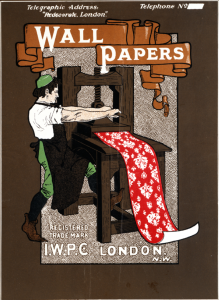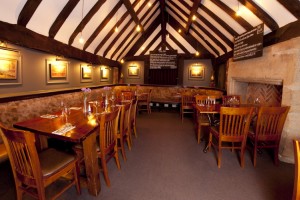Papering over the cracks
There is something really interesting about the history of wallpaper – its place in our lives and culture. Decorative paper that smooths over the cracks, bringing colour into another wise bland space. In WALLPAPER, we peel through the layers of paper to unearth the stories of times gone by at Dalton Manor, uncovered by the main protagonist, PJ Sanders.
Throughout the history of decorative arts, wallpaper has been a poor relation, a consumer item, fragile but not fragile enough to be exceptional. As it is easy to replace, it has often disappeared from archives and historical records. This absence of archival history seemed to resonate with stories lost in walls of Dalton Manor.
Wallpaper is often thought of as ‘background’ rather than foreground – like those incidental stories that are attached to everyday items that pepper our lives. Nevertheless, its role in the overall decorative scheme is a vital one, and the choice of wallpaper affects the mood and style of a room, and may influence the choice of other furnishings. The wallpaper itself may be indicative of the function of a room, and will often reflect the age, status or gender of its inhabitants or habitual occupants. Often wallpaper is designed to look like something else – tapestry, velvet, chintz, silk drapery, linen, wood, masonry, a mural. This decorative deception can be reflected in the mementos of family life, children’s drawings, family photos and certificates of achievement standing proud on a sideboard conveying a families social norm, while under the veneer are chinks and flaws.
Prior to the 18th century heavy fabric tapestries would adorn the walls of the wealthy, at first, decorated paper was only for the rich and upper classes, but with changes in manufacturing and printing wallpaper became an affordable substitute for more costly materials and suffered for being seen as a cheap imitation.
Madame de Genlis (in 1760) bemoaned the frivolous fashion for English wallpapers which had driven the Gobelin tapestries out of style. Wallpaper itself comes to stand for a decline in values, both moral and social:
‘In the old days, when people built, they built for two or three hundred years; the house was furnished with tapestries made to last as long as the building; the trees they planted were their children’s heritage; they were sacred woodlands. Today forests are felled, and children are left with debts, paper on their walls, and new houses that fall to pieces!’
Wallpaper becomes a metaphor for dishonesty as opposed to the secure and lasting, and for the valuing of appearance over substance. We paper over the cracks.
The generations of the Sanders family who lived in Dalton Manor spanned the social classes from upper class respected gentry through to illegitimate children from the servants. The house homed them all, and alongside the walls were decorated accordingly. In the early 19th century Dalton Manor enjoyed wallpaper as a luxurious and elegant commodity just in the parlour, but towards the end of the century, in line with machine printing and repeal of excise duty, wallpaper became more modest and affordable for every room, and in easy reach of the Dalton Manor family that had dropped down the social classes.
We were delighted to find out that Wakefield Museum had recently been gifted a collection of wallpaper that had been stripped from a 16th century timber frame building in the city. The Cowshed is the stunning Grade 2 listed building around which Joanne Harris created the book Chocolat, adapted into the famous film. It is now a restaurant and during its refurbishment pieces of the wallpaper had been carefully removed and photographed. The curator at the Museum kindly gave us permission to use the images to create tiles in which we could decorate Dalton Manor.
In devising the WALLPAPER story we liked the links often associated wallpaper as a statement on cleanliness and comfort, home and domesticity. In her story ‘The Yellow Wallpaper’, Charlotte Perkins-Gilman used wallpaper to symbolise the claustrophobia and repressive control that a woman experiences within the confines of her home and family.
In our WALLPAPER story we wanted to create a home that had a history, that had layers that could be peeled back, with stories revealed – we wanted to tell PJ’s story in a multi-layered way through texture, colour and the illusion of a house whose memories and secrets are covered but not far from the surface.


